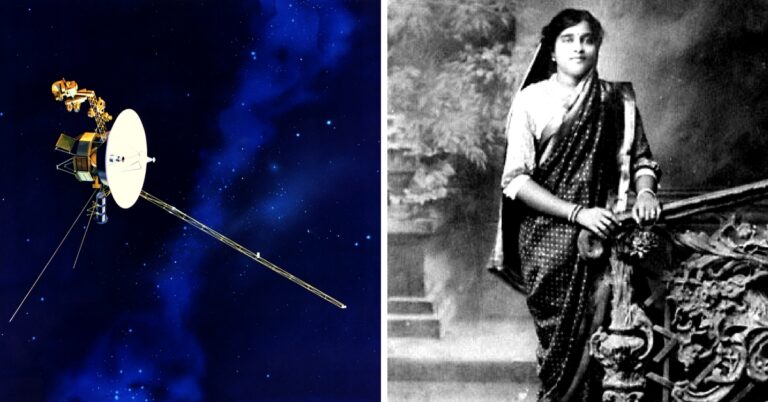![]()
NASA’s Voyager 1 spacecraft, a marvel of human ingenuity launched on September 5, 1977, has achieved remarkable milestones since its journey began. Originally tasked with exploring Jupiter and Saturn, Voyager 1 defied expectations by becoming the first man-made object to enter interstellar space in 2012. This monumental achievement not only extended the mission beyond the outer planets but also carried a profound message of humanity’s cultural heritage into the cosmos.
At the heart of this message lies the Golden Record, a 12-inch gold-plated copper disc crafted to preserve and communicate the essence of human civilization. Among the diverse collection of sounds, greetings, and music chosen by American astronomer Carl Sagan and his team, one piece stands out with its deep cultural resonance: a Hindustani classical composition titled “Jaat Kahan Ho,” performed by the legendary Indian vocalist Kesarbai Kerkar.
Kesarbai Kerkar, born in a remote village in Goa, rose to prominence in the early 20th century, breaking free from the devdasi tradition to become a celebrated figure in Hindustani classical music. Her musical journey began under the guidance of various esteemed maestros and culminated with the mentorship of Alladiya Khan, the founder of the Jaipur-Atrauli gharana. Despite initial rejection from Khan due to her incomplete mastery of his style, Kerkar’s persistence and intervention by the ruler of Kolhapur eventually secured her place as his disciple.
Kerkar’s dedication to her art led to an illustrious career, marked by accolades such as the title of ‘Surshri’ (Queen of Music) awarded by Rabindranath Tagore in 1938 and the Sangeet Natak Akademi Award in 1953. The Padma Bhushan, one of India’s highest civilian honors, followed in 1969. Her rendition of raga Bhairavi, particularly the piece “Jaat Kahan Ho,” was celebrated for its emotive depth and musical mastery, earning the admiration of many, including ethnomusicologist Robert E. Brown, who advocated for its inclusion on the Voyager’s Golden Record.
The Golden Record, designed to be a time capsule and a cultural ambassador of Earth, features Kerkar’s raga alongside works by classical composers such as Beethoven, Bach, and Mozart. This selection serves as a testament to the rich and diverse tapestry of human artistic expression. Timothy Ferris, a producer of the Voyager record, highlighted the seamless transition between different musical geniuses, noting the significance of Kerkar’s inclusion as a “formal” yet evocative closing piece on the record.
As Voyager 1 continues its journey through the vast expanse of interstellar space, it remains a beacon of humanity’s reach and cultural heritage. The spacecraft is expected to take approximately 117,000 years to reach the TRAPPIST-1 system, a newly discovered star system with potentially habitable planets. This discovery underscores the ongoing fascination with space exploration and the Voyager 1 probe’s role in expanding our understanding of the cosmos.
Kesarbai Kerkar’s raga, enshrined on the Voyager 1 Golden Record, is not just a musical piece but a symbol of enduring cultural legacy. As the spacecraft ventures further into the unknown, Kerkar’s voice continues to echo through the cosmos, preserving the beauty of Indian classical music for future generations and potential extraterrestrial listeners alike.
Watch the video here.
Reference:







